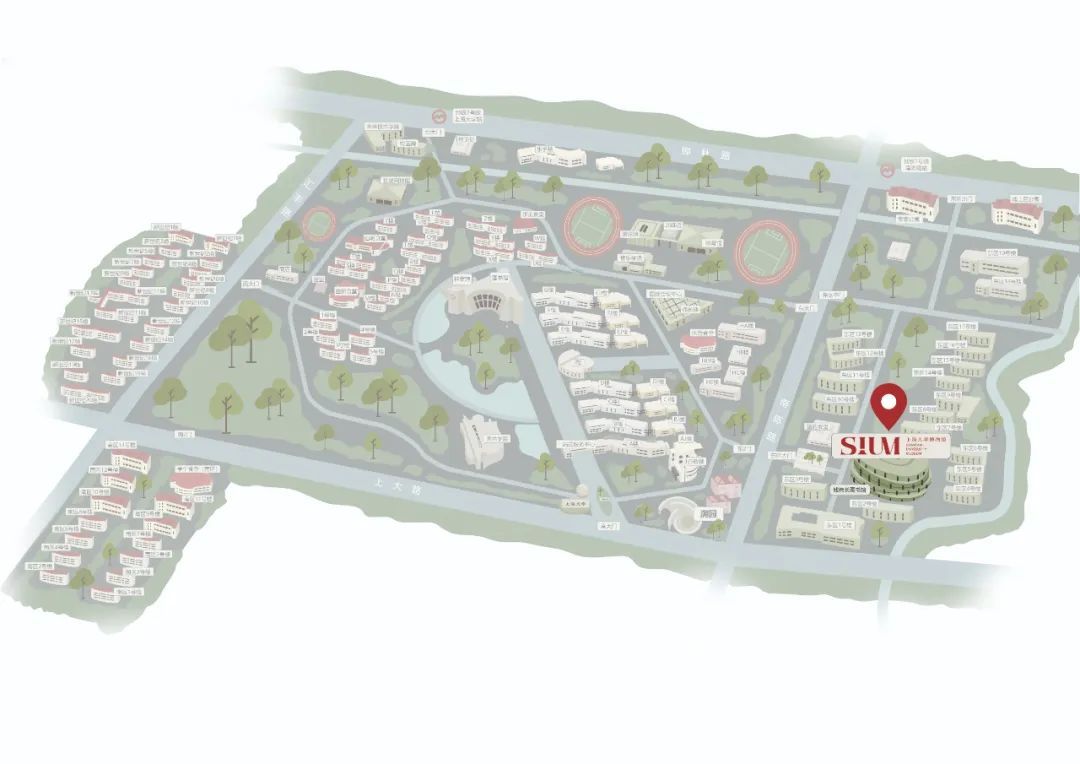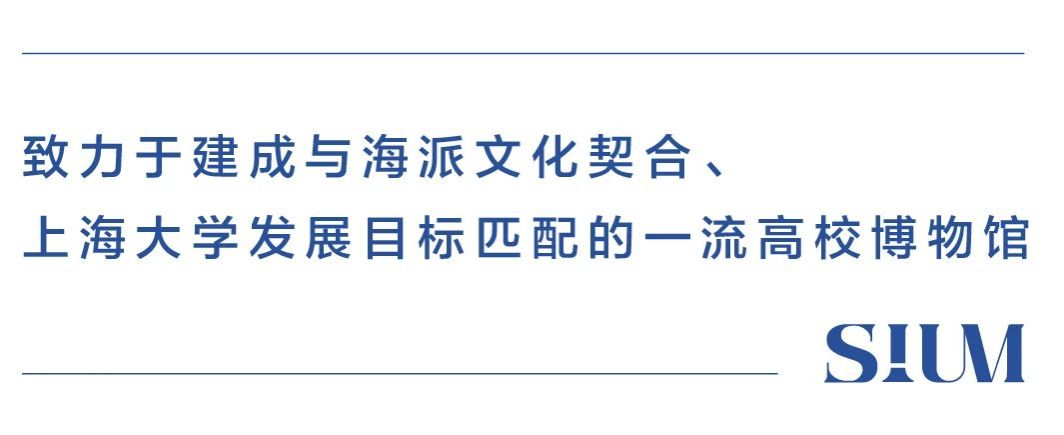
“沉睡三千年,一醒惊天下”的三星堆遗址,是中华文明璀璨星河中明亮而神奇的一颗。
罗丹是“现代雕塑之父”,他的作品中饱含对生命、自然的歌颂、热爱与忧思。
在上海大学博物馆举办的特展——“青铜之光:三星堆与罗丹的超时空对话”展出了许多三星堆、金沙遗址出土文物和罗丹及其同时代雕塑家的作品,让我们一起来详细了解展品背后的故事吧!
青铜人头像
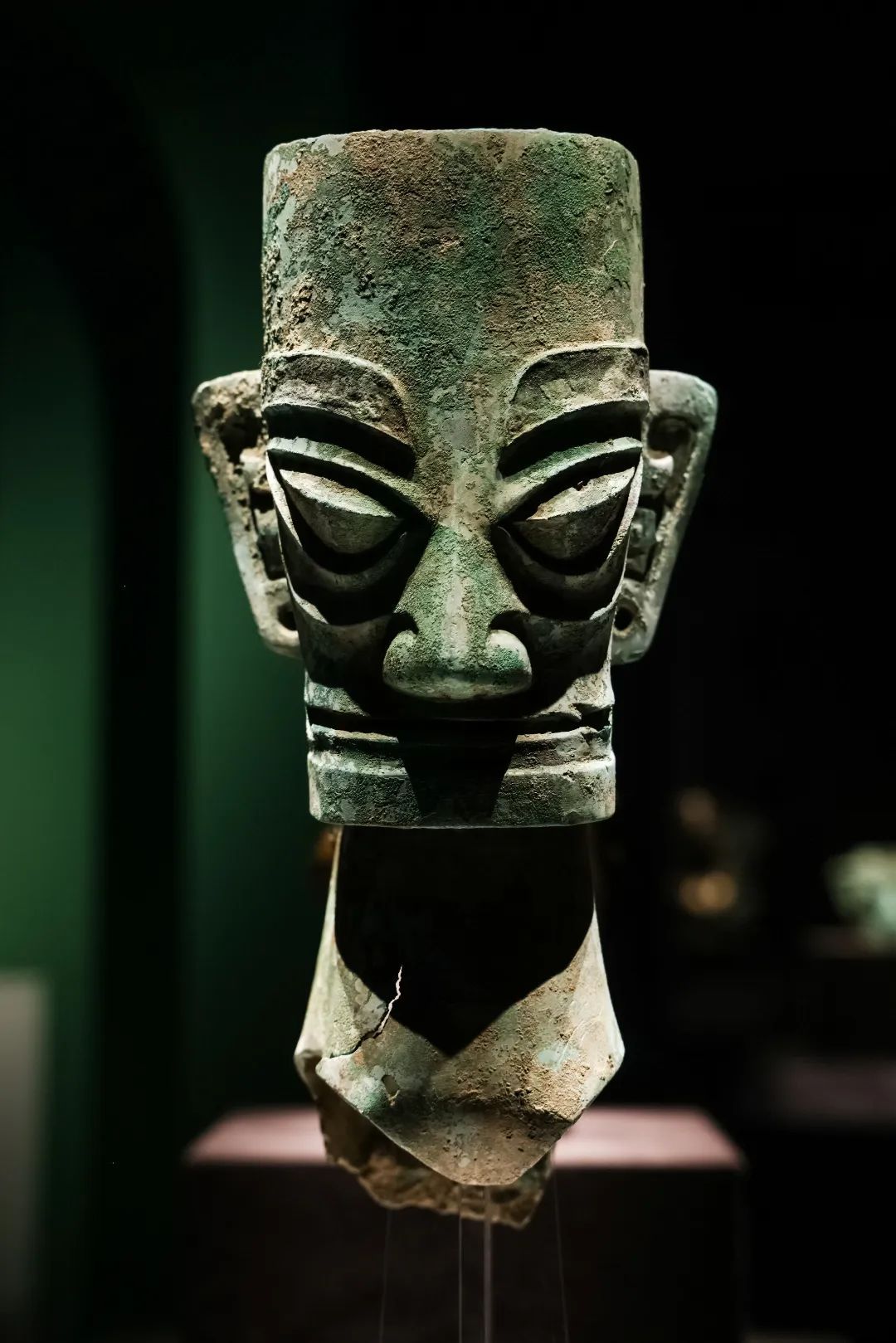
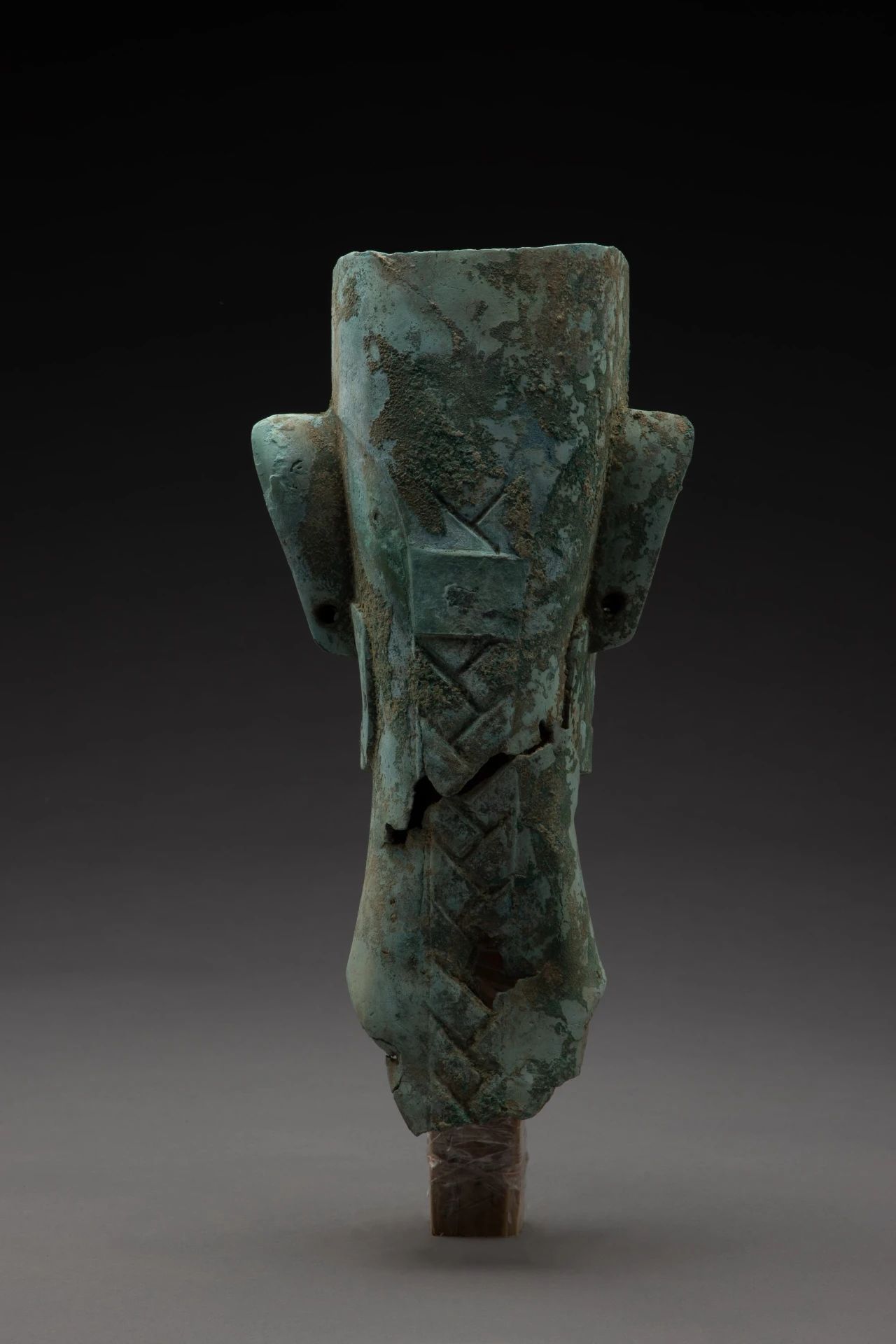
· 商代后期(公元前1300年—前1100年)
· 两耳宽18厘米,高34厘米,厚16.5厘米
· 2021年出土于四川广汉三星堆遗址三号祭祀坑,K3QW:29
· 四川省文物考古研究院藏
· Late Shang Dynasty (1300B.C. - 1100B.C.)
· Horiz Dia. 18 cm; H. 34 cm; T. 16.5 cm
· Unearthed from No. 3 sacrificial pit at the Sanxingdui Site in Guanghan, Sichuan, in 2021,K3QW:29
· Collection of Sichuan Provincial Cultural Relics and Archaeology Research Institute
平顶辫发,额部脑后均无发际线,头发向后披,发辫垂于脑后,上端扎束,下端垂于后颈部。脸形方阔,浓眉大眼,眉眼上挑,高鼻梁,蒜头鼻,阔口紧闭。长方形竖耳,耳廓饰有卷云纹饰,两耳垂各有一大穿孔。颈较粗,前后呈倒尖角形。
颈部下方呈倒尖角形,推测另有木柱或身躯之类的附属物与其配合使用。数量众多的该类造型的人头像,形成了一种错落有致、气势煊赫的蔚然景观。推测“辫发”可能是从事行政事务的管理者。
It features a hairstyle characterized by a flat top and a braid, with no visible hairline at the forehead or back of the head. The hair is swept back, with the braid hanging down at the back of the head. The upper part of the braid is tied up, while the lower part extends vertically to the nape of the neck. The face has a square-shaped appearance with thick eyebrows and large eyes. The eyebrows and eyes are slanted upwards. The nose is high and broad, with a bulbous tip. The lips are wide and tightly closed. The rectangular-shaped ears are vertically oriented. The outer parts of the ears are adorned with Juanyun Wen (卷云纹, curling-cloud pattern), and each earlobe has a large perforation. The neck is relatively thick and tapers to a downwardpointing angle at both the front and back.
The bottom part of the neck is a downward-pointing angle, indicating the possibility of an attachment such as a wooden pillar or a body that would have been used in conjunction with it. A large number of bronze human-head statues create a visually striking and impressive landscape. As evinced, the braided-hairstyle group engaged in administrative management.
《多西亚》
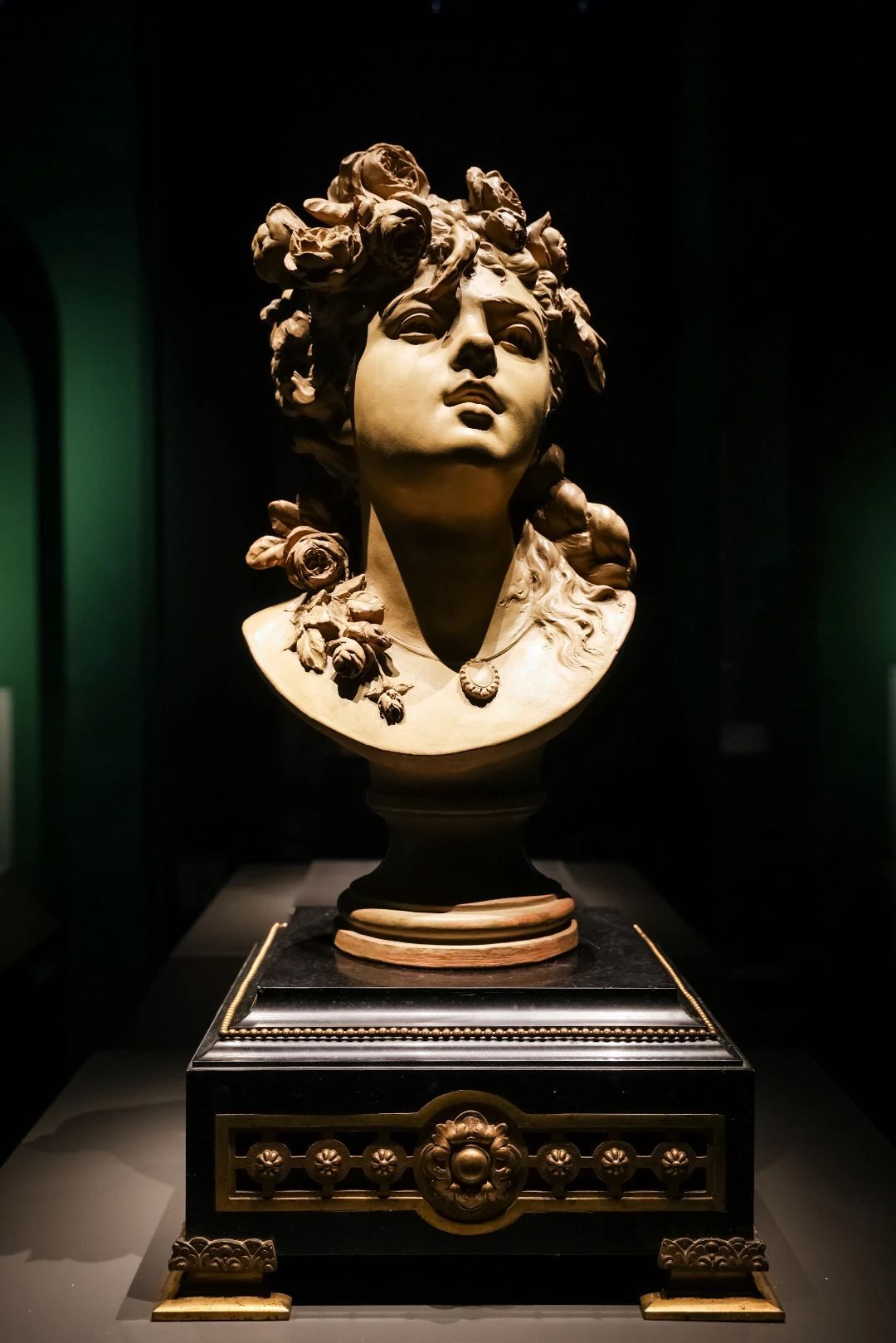
· 奥古斯都·罗丹(1840—1917)
· 陶土
· 1874年
· 高42厘米
· Auguste Rodin (1840 - 1917)
· Clay
· 1874
· H. 42 cm
这尊半身像是罗丹刚开始从事雕塑,与加里埃- 贝勒斯(Carrier-Belleuse)在比利时一起工作时创作的作品。加里埃-贝勒斯是雕塑家,同时也是企业主,罗丹以他为榜样,成为尽人皆知的雕塑家, 在二十年间创作了大量反映出他老师的技术和品位的雕塑。这件作品让我们联想到加里埃-贝勒斯创作的寓意季节的雕塑和酒神女祭司的半身像雕塑。
This bust is one of Rodin’s earliest sculptures, created while he was working with Carrier-Belleuse in Belgium. Carrier Belleuse was a sculptor and entrepreneur, and Rodin took a leaf out of his book and eventually became a renowned sculptor himself. In more than two decades, Rodin the created a lot of sculptures that embodied the techniques and tastes of his teacher Carrier-Belleuse. Dosia reminds us of sculptures on seasons and the bust of Bacchante created by Carrier-Belleuse.
展览时间:
2023年12月13日至2024年2月1日
展览地点:
上海大学博物馆一层临展厅
(上海市宝山区南陈路333号)
开放时间:
周一至周日8:30-16:30(16:00停止入馆)
校内师生凭本人一卡通入馆,无需预约。
校外观众采取网上预约方式入馆,扫描下方二维码或关注“上海大学博物馆”微信公众号,点击“个人预约”。

/地址/
上海大学博物馆
(南陈路333号)
